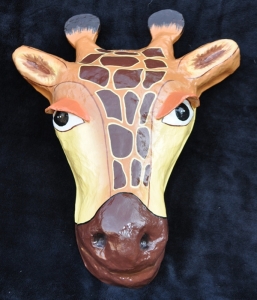“Creepy Crawlers” and Other Garden Friends
![ad7395ccb8072aca766cd4ff4c9c7d81[1]](https://blog.itscactus.com/wp-content/uploads/2014/02/ad7395ccb8072aca766cd4ff4c9c7d811.jpg) Remember the “Thingmaker” by Mattel and those marvelous rubber bug creations that you could make yourself with colored (even glow-in-the dark!) Plastigoop? You poured the Goop into metal molds that you placed over a heating element and waited impatiently for the Goop to cook sufficiently and then cool sufficiently so that you could pry out your new astonishingly creepy “Creepy Crawlers” and amaze your friends. Maybe you remember, and maybe you don’t. They came on the market in 1964 and disappeared quietly in the 1970s amid concerns for child safety regarding the heating element. Nevertheless, the “Creepy Crawlers” were marvelous and the burns that I probably did sustain while making them must have been minor and healed quickly, for I do not recall them at all. Now thanks to Mattel, the moniker, “Creepy Crawler” refers to anything of six or more legs in my garden, flower beds or pretty much anywhere. It is a convenient catch-all phrase for the entomologically challenged, which indeed, I am.
Remember the “Thingmaker” by Mattel and those marvelous rubber bug creations that you could make yourself with colored (even glow-in-the dark!) Plastigoop? You poured the Goop into metal molds that you placed over a heating element and waited impatiently for the Goop to cook sufficiently and then cool sufficiently so that you could pry out your new astonishingly creepy “Creepy Crawlers” and amaze your friends. Maybe you remember, and maybe you don’t. They came on the market in 1964 and disappeared quietly in the 1970s amid concerns for child safety regarding the heating element. Nevertheless, the “Creepy Crawlers” were marvelous and the burns that I probably did sustain while making them must have been minor and healed quickly, for I do not recall them at all. Now thanks to Mattel, the moniker, “Creepy Crawler” refers to anything of six or more legs in my garden, flower beds or pretty much anywhere. It is a convenient catch-all phrase for the entomologically challenged, which indeed, I am.
It’s kind of too bad, really. “Creepy Crawlers” is a great name, but greater still are the REAL names of REAL bugs. Take for example, “Green Lacewing Aphids,” or “Minute Pirate Bugs” or “Assassin Bugs” or “Spined Soldier Bugs.” What’s more, each of the aforementioned is great in the garden. Voracious predators all, they feed on harmful garden pests which can destroy your labors of love in a twinkling. Healthy populations of these carnivorous insects can go a long way towards protecting your garden as it grows.
The good news is that, with a little advanced planning, you can encourage beneficial bugs to take up residence in a bed of your choosing rather easily. Include plants of various heights in your garden, including ground cover, which gives desirable dwellers a place to hide. Taller flowers with composite blooms, like zinnias and sunflowers, provide attractive food sources to beneficial bugs. Additionally, providing a little water can be helpful. No need for “your” bugs to go to the neighbor’s for a little refreshment. Puddles that form after sprinkling can be sufficient. If you do drip irrigation, place small dishes at intervals and keep them filled for your thirsty friendlies. Mulch with generosity and put out large flat stones which can be crawled under for protection from heavy heat and mid-day summer sun.
Experts rightly advise gardeners to learn to distinguish the “good” bugs from the “bad” ones. For me, visual identification is one tough row to hoe, and proper nomenclature is yet another. I pledge myself to both tasks, but until I get the names straight I’ll just say, “Bring on the Creepy Crawlers!”
Contributed by Linda for Beyond Borders/It’s Cactus

![3150[1]](https://blog.itscactus.com/wp-content/uploads/2014/02/31501.jpg)



